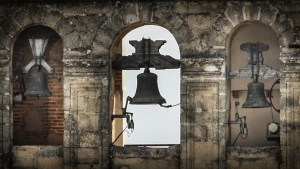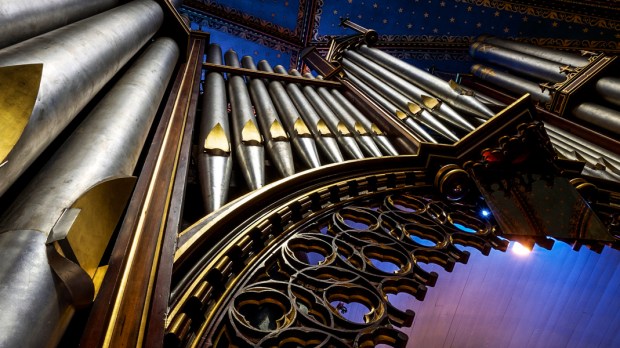The pipe organ has been a staple of Roman Catholic liturgy for centuries. While fewer and fewer people are able to play this ancient instrument, its strong association with Christian worship is undeniable.
The organ has its roots all the way back in the 3rd century BC, invented by a Greek engineer named Ctesibius of Alexandria. At first it was primarily used for secular events, but by the 10th century the instrument was introduced into churches. During the Middle Ages it spread throughout Europe and was recognized as the “the most complex of all mechanical instruments developed before the Industrial Revolution.”
Pope Benedict XVI recalled its spiritual power when speaking to a visiting choral group. He said, remembering a particular time when he blessed an organ, “I have an indelible memory of how — in the harmony of that wonderful organ, of the choir conducted by Kohlhaufel, and the luminous beauty of the church — we experienced the joy that comes from God. Not just the ‘spark of the gods’ of which Schiller speaks, but truly the flame of the Holy Spirit that brought us to feel in our innermost being what we also know from the Gospel of St. John: That he himself is joy. And this joy was communicated to us.”
He added that the organ “continues to play and to help people perceive something of the splendor of our faith — a splendor kindled by the Holy Spirit himself. With it, the organ carries out an evangelizing function, proclaims the Gospel in its own way.”
Read more:
How do you get a massive organ up into a choir loft? Watch this.
The blessing of a pipe organ, as found in the Roman Ritual, recalls this spiritual power.
God, who by Moses, your servant, ordered the sound of trumpets to accompany the sacrifices offered to your name, and willed that the children of Israel sing praise to your name with trumpets and timbrels; we beg you to bless + this organ which we dedicate to your service. And grant that your faithful who are gladdened with holy songs here on earth may attain everlasting gladness in heaven; through Christ our Lord. All: Amen.
Furthermore, the pipe organ was used by missionaries to preach the Gospel. According to the Institute of Historic Organs, when Spanish missionaries arrived in Mexico, “Included in the cargo were tabletop organs, which would prove to be a powerful tool in the mission to convert the native population to Christianity. Since words are more easily memorized when sung than when spoken, the organ could provide a resonant outline for prayers and hymns. The importance of music for the conversion process was so well recognized by the King, Charles V, that those friars competing for appointments to be sent abroad were given priority if they had musical skills.”
The use of the pipe organ has decreased over the past few decades, but recently many younger people have taken up the challenge to learn the complex instrument and are doing what they can to preserve its role in sacred worship for generations to come.
Read more:
Dying art: Churches struggling to find organists

Read more:
The surprising spiritual power of church bells

